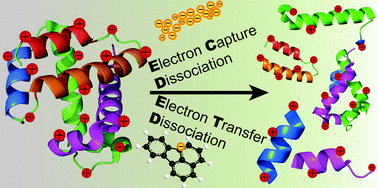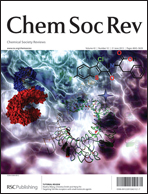Principles of electron capture and transfer dissociation mass spectrometry applied to peptide and protein structure analysis
Abstract
This tutorial review describes the principles and practices of electron capture and transfer dissociation (ECD/ETD or ExD) mass spectrometry (MS) employed for peptide and protein structure analysis. ExD MS relies on interactions between gas phase peptide or protein ions carrying multiple positive charges with either free low-energy (∼1 eV) electrons (ECD), or with reagent radical anions possessing an electron available for transfer (ETD). As a result of recent implementation on sensitive, high resolution, high mass accuracy, and liquid chromatography timescale-compatible mass spectrometers, ExD, more specifically, ETD MS has received particular interest in life science research. In addition to describing the fundamental aspects of ExD radical ion chemistry, this tutorial provides practical guidelines for peptide de novo sequencing with ExD MS, as well as reviews some of the current capabilities and limitations of these techniques. The merits of ExD MS are discussed primarily within the context of life science research.


 Please wait while we load your content...
Please wait while we load your content...